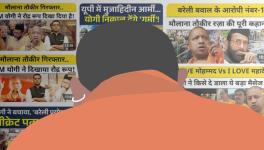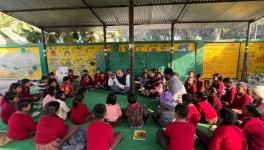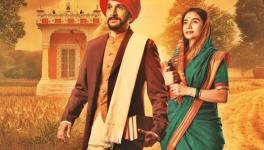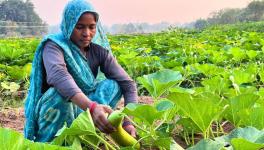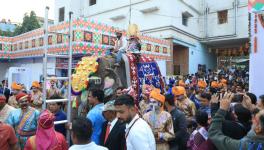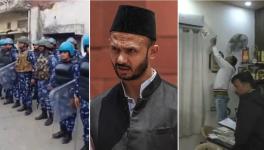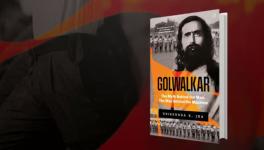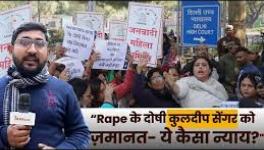Costume Festival Reinforces Social Unity in Uttar Pradesh Hamlet
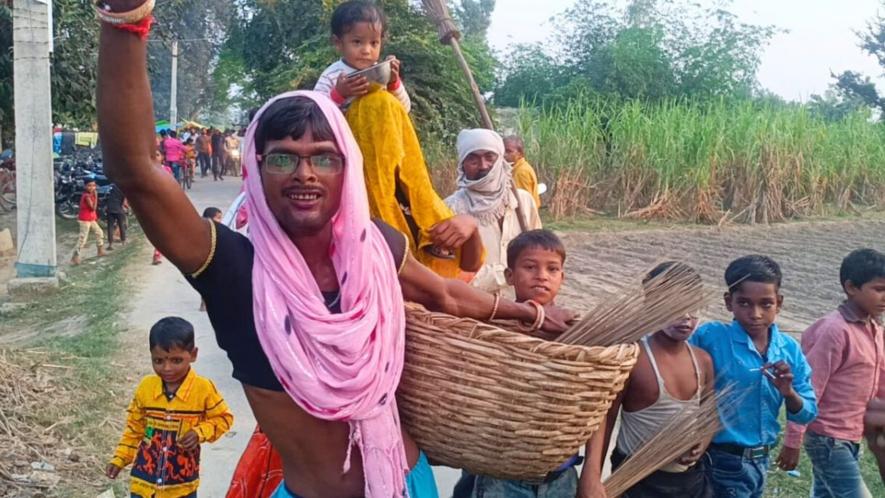
Villagers dressed up to celebrate Nakal Pailakisa village of Uttar Pradesh’s Sitapur district. Photo: Ramji Mishra.
Sitapur, Uttar Pradesh: A small hamlet in Sitapur district of Uttar Pradesh (UP) has made its name because of its annual three-day Nakal—a sort of fancy-dress competition. No one knows for sure when the tradition started, but it has always been around, says Ramdhar Rajvanshi (50) of Pailakisa village.
The fair starts a day before Karwa Chauth and ends a day after it, bringing together the community and helping in honing the traditional artform.
According to Sukali Rajvanshi (58), the entire village comes together to organise the fair. “This is our annual community event. Every section of the village contributes and participates in the fair. It reinforces the message of village unity. Also, there is no financial burden on anyone in connection with the fair,” he says.
The village population is made up of Dhobis, Kahars, Muraus, Bhats, Naus, Pasis, Lakadharas, Bhurjis, Brahmins and Thakurs, who come together without any discrimination to organise the festival, he says.
EMOTIONAL SIGNIFICANCE
Sumit Bajpai ‘Madhyandin’ (35), a writer, says the purpose of organising the Nakal is to bring “positivity and happiness” in the village. “It’s more crucial message is in promoting social unity.”
“The fair has been a part of our lives since childhood. Attending the fair was supposed to bring good luck. It was thought that skipping the fair for a year would lead to the death of 40 people,” Ramkumar Pandey (61) explains.
Ramakant Pandey (94), a historian from Brahmawali village, located some 12 km from Pailakisa, highlights the festival’s emotional and cultural significance for the residents.
“The fair is held to ensure good luck in the village all year round and the villagers think that it is auspicious to attend. Around 60 to 70 years ago, the villagers could not organise the fair due to lack of time and coincidentally 40 people died due to a cholera outbreak. Though it is a coincidence, the villagers were deeply affected and ever since not a fair has been missed.”
“We even got special permission from the administration to hold the fair during the pandemic,” Ramkumar says. The fair was organised in a big open field, and only a small number of people participated from Pailakisa and nearby villages.
ECONOMIC SIGNIFICANCE
The villagers are not underselling the importance of the fair, which draws residents from nearby areas in large numbers, spurring economic activity. Lekhraj Rajvanshi (45) of Dhorha village, in Eliya block, has been setting up a stall during the fair here for the last five years.
“I sell toys and run a food stall. I find great pleasure in attending this fair each time and to my knowledge, there is no comparable fair in the surrounding areas that I have seen or heard of,” he says adding that the money he made depended on the crowd.
The village authorities do not charge any amount from the people who want to set up stalls. Food items, small decorative items, bindis, bangles and similar items are available at the fair.
“I am setting up my shop here for the first time ... everyday, I manage to make a profit of Rs 400-Rs 500,” Kamlesh Rathore of Maholi, who put together a stall for sunglasses this time, tells 101Reporters.
Thakur Gokul Singh (85) says because of the fair’s popularity, several local artistes participate in the Nakal. “Earlier, known local artistes such as Buddha Lohar, from Korapur village, Bihari Pandit, from Luktaha village, and Gulab, from Khuti village, participated in the Nakal,” he recalls.
CULTURAL SIGNIFICANC
The preparations for the fair begin after a special prayer on the first day of the Kartik month during Krishna Paksha, as per the Hindu calendar.
Usually, only men participate in the Nakal, says Ganga Devi, whose husband dresses up for the fair. “Most women fast on Karwa Chauth. It is possible that men took up on themselves the task of entertaining the village womenfolk and hence this tradition persisted,” she says.
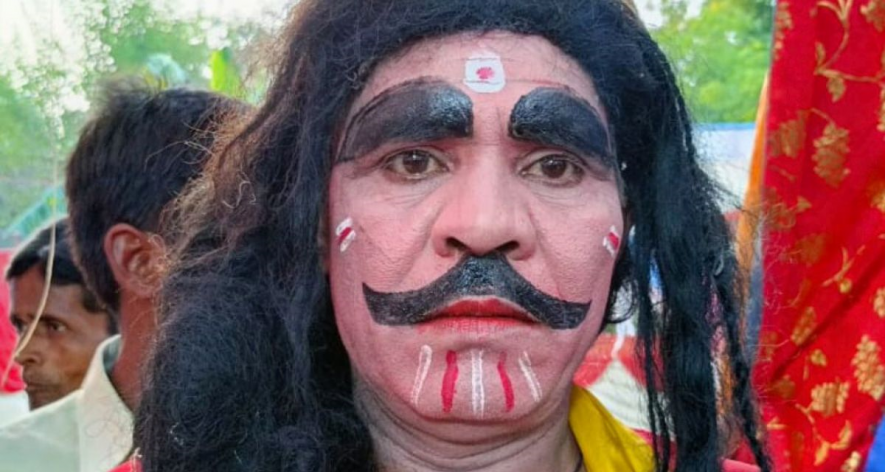
A villager participates in the costume fair. (Photo: Ramji Mishra.
“The participants get their clothing and other embellishments ready and do their make-up on their own. Even my children take part in the Nakal. These three days are a very enjoyable time,” she adds.
The popular Nakals are Sulochana Prasang (Ramayana), imitated by Ramkumar Pandey; Mahouta-Mahoutin, by members of Maurya and Rajvanshi families; Lord Shiva by Ramnath Pandey; and Agia Betal by Devi Rajvanshi besides different imitations of Lord Vishnu. Tableaux of different incarnations are also exhibited. Most of the artistes do not turn to the mainstream imitations but only copy their ancestors.
Ramji Mishra is an Uttar Pradesh-based freelance journalist and a member of 101Reporters, a pan-India network of grassroots reporters.
Get the latest reports & analysis with people's perspective on Protests, movements & deep analytical videos, discussions of the current affairs in your Telegram app. Subscribe to NewsClick's Telegram channel & get Real-Time updates on stories, as they get published on our website.











